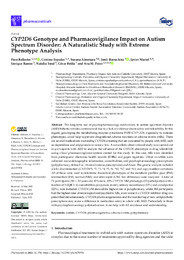Please use this identifier to cite or link to this item:
https://hdl.handle.net/11000/32351Full metadata record
| DC Field | Value | Language |
|---|---|---|
| dc.contributor.author | Ballester, Pura | - |
| dc.contributor.author | Espadas, Cristina | - |
| dc.contributor.author | Almenara, Susana | - |
| dc.contributor.author | Barrachina, Jordi | - |
| dc.contributor.author | Muriel, Javier | - |
| dc.contributor.author | Ramos, Enrique | - |
| dc.contributor.author | Toral, Natalia | - |
| dc.contributor.author | Belda, César | - |
| dc.contributor.author | Peiró, Ana | - |
| dc.contributor.other | Departamentos de la UMH::Farmacología, Pediatría y Química Orgánica | es_ES |
| dc.date.accessioned | 2024-06-27T10:37:25Z | - |
| dc.date.available | 2024-06-27T10:37:25Z | - |
| dc.date.created | 2023-07-03 | - |
| dc.identifier.citation | Pharmaceuticals 2023, 16, 954 | es_ES |
| dc.identifier.uri | https://hdl.handle.net/11000/32351 | - |
| dc.description.abstract | The long-term use of psychopharmacology medications in autism spectrum disorder (ASD) hitherto remains controversial due to a lack of evidence about safety and tolerability. In this regard, genotyping the metabolizing enzyme cytochrome P450 (CYP) 2D6, especially its extreme phenotypes, could help to prevent drug-related adverse reactions or adverse events (AEs). There are several medications warranting CYP2D6 screening that are consumed by people with ASD, such as risperidone and aripiprazole to name a few. A naturalistic observational study was carried out in participants with ASD to analyze the influence of the CYP2D6 phenotype in drug tolerability using a local pharmacovigilance system created for this study. In this case, AEs were identified from participants’ electronic health records (EHRs) and paper registries. Other variables were collected: socio-demographic information, comorbidities, and psychopharmacology prescriptions (polypharmacy defined as 4 simultaneous prescriptions) and doses. The genetic analysis included allelic discrimination (CYP2D6*1, *2, *3, *4, *5, *6, *10, *17, and *41) and copy number variations. All of these were used to determine theoretical phenotypes of the metabolic profiles: poor (PM); intermediate (IM); normal (NM); and ultra-rapid (UM). Sex differences were analyzed. A total of 71 participants (30 10 years old, 82% male, 45% CYP2D6 NM phenotype (32 participants)) with a median of 3 (IQR 2–4) comorbidities per person, mainly urinary incontinence (32%) and constipation (22%), were included. CYP2D6 UM showed the highest rate of polypharmacy, whilst, IM participants had the highest rates of neurological and psychiatric AEs, even worse if a CYP2D6 inhibitor drug was prescribed simultaneously. CYP2D6 pharmacogenomics and the monitoring of new antipsychotic prescriptions may make a difference in medication safety in adults with ASD. Particularly in those with psychopharmacology polymedication, it can help with AE avoidance and understanding. | es_ES |
| dc.format | application/pdf | es_ES |
| dc.format.extent | 14 | es_ES |
| dc.language.iso | eng | es_ES |
| dc.publisher | MDPI | es_ES |
| dc.rights | info:eu-repo/semantics/openAccess | es_ES |
| dc.rights.uri | http://creativecommons.org/licenses/by-nc-nd/4.0/ | * |
| dc.subject | autism | es_ES |
| dc.subject | CYP2D6 | es_ES |
| dc.subject | pharmacogenetics | es_ES |
| dc.subject | adverse events | es_ES |
| dc.subject | polypharmacy | es_ES |
| dc.subject.other | CDU::6 - Ciencias aplicadas::61 - Medicina::615 - Farmacología. Terapéutica. Toxicología. Radiología | es_ES |
| dc.title | CYP2D6 Genotype and Pharmacovigilance Impact on Autism Spectrum Disorder: A Naturalistic Study with Extreme Phenotype Analysis | es_ES |
| dc.type | info:eu-repo/semantics/article | es_ES |
| dc.contributor.institute | Institutos de la UMH::Instituto de Bioingeniería | es_ES |
| dc.relation.publisherversion | https://doi.org/10.3390/ph16070954 | es_ES |

View/Open:
CYP2D6 Genotype and Pharmacovigilance Impact on Autism Spectrum Disorder. A Naturalistic Study with Extreme Phenotype Analysis.pdf
1,21 MB
Adobe PDF
Share:
.png)
